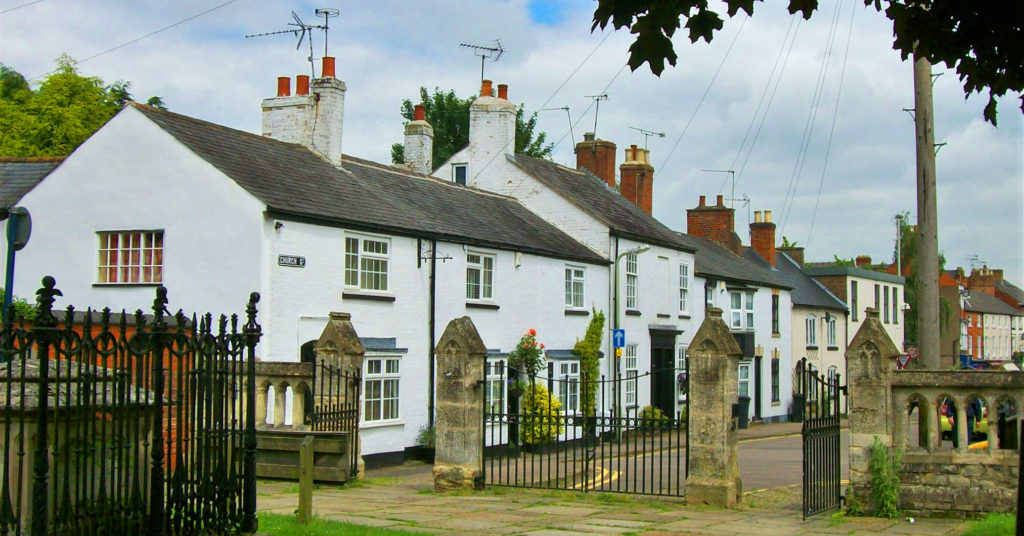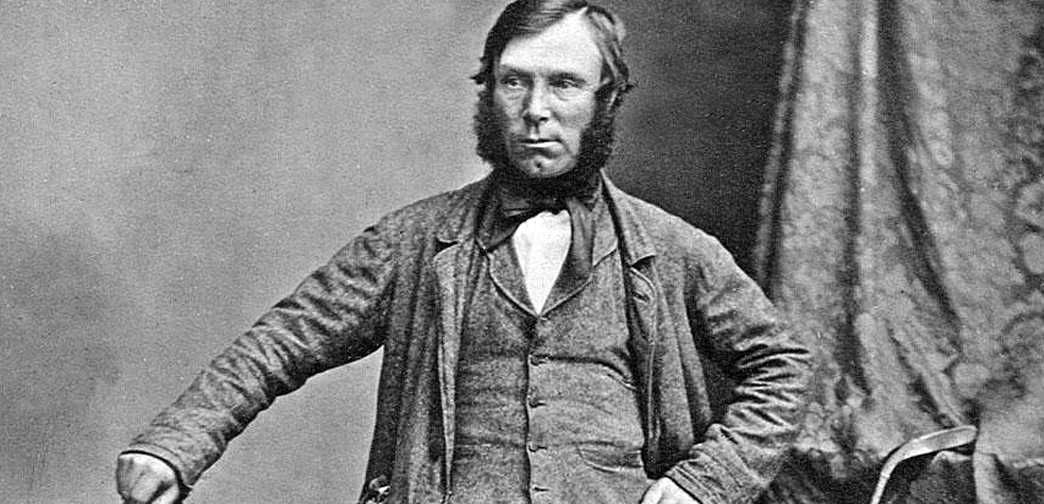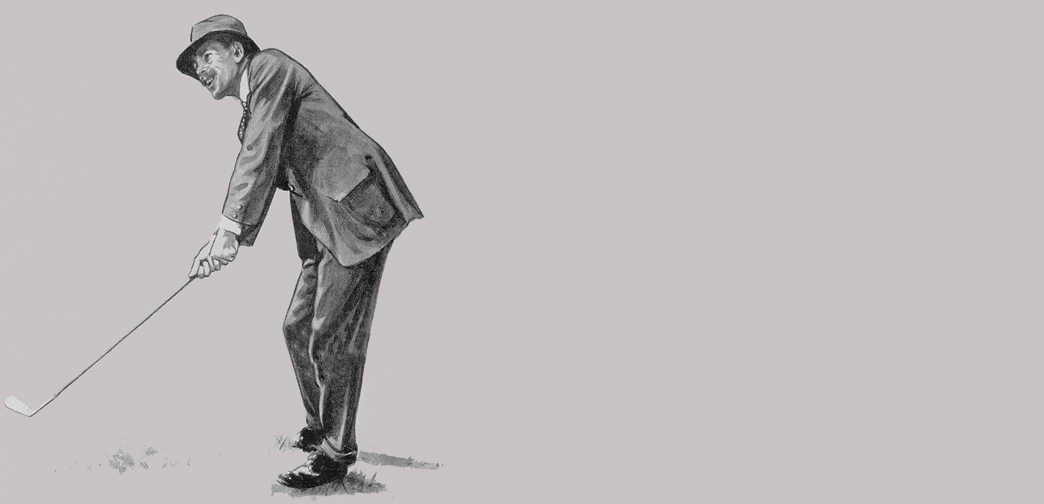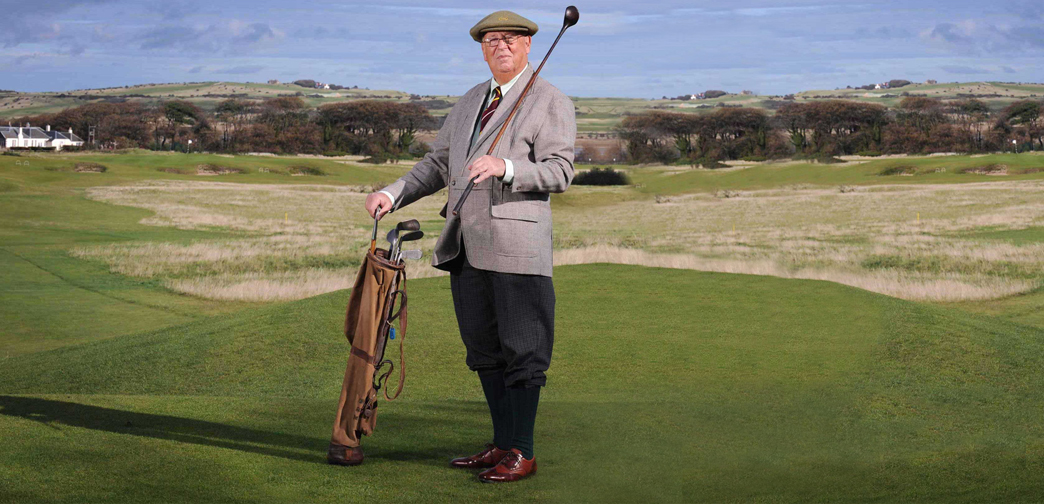20 Questions with Bill Zilberts, aka carlingbill54
 With a population of 9,300, Lutterworth, England, might appear to be an odd place to find one of the most active hickory golf club sellers on eBay. In the 14th century, the religious reformer Canon John Wycliffe, who hailed from the vicinity, was traditionally believed to have produced the first translation of the Bible from Latin into English. Later, in the days of the stagecoach, Lutterworth was an important stopping-place on the road from Leicester to Oxford and London, and many former coaching inns remain in the town. The town also contains some historic half-timbered buildings, some of which date back to the 16th century.
With a population of 9,300, Lutterworth, England, might appear to be an odd place to find one of the most active hickory golf club sellers on eBay. In the 14th century, the religious reformer Canon John Wycliffe, who hailed from the vicinity, was traditionally believed to have produced the first translation of the Bible from Latin into English. Later, in the days of the stagecoach, Lutterworth was an important stopping-place on the road from Leicester to Oxford and London, and many former coaching inns remain in the town. The town also contains some historic half-timbered buildings, some of which date back to the 16th century.
Half way between London and Liverpool, the community boasts a lovely 1904 golf course and is best known for its weekly outdoor market, started in 1214 and continuing to this day. Located just south of the town, the golf course is set in rolling countryside. The club places an emphasis on maintaining the course in good condition and the greens are currently considered as among the best in the county. With plenty of established trees a number of ponds and the meandering river Swift, the course places a premium on accuracy. The course is a good test of golf and provides plenty of interest for all standards.
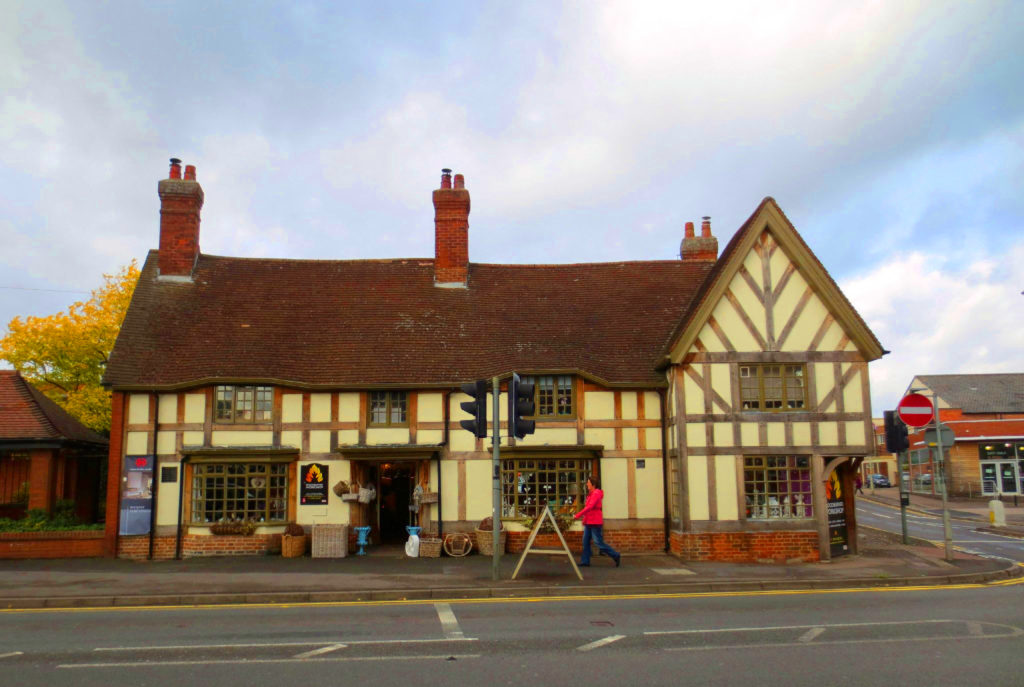
It is there that I found Bill Zilberts, who goes by the handle carlingbill54 on eBay. Bill is 63 and has been posting very impressive clubs for many years that seem to always pique my interest. Not knowing who this seller really was, I decided to DM him via eBay to see if he would respond to a simple online interview. He relented and the following flowed from our exchange. – – Robert Birman
QUESTIONS:
- As an avid eBay-er, I’ve followed your site, carlingbill54, for many years, and I believe I’ve purchased from you as well. First of all, what’s your story? Do you work, are you retired, how did you get into golf club collecting/sales in general?
My passion for hickories began a long time ago when I decided I needed a hobby. Life was stressful at that time with running my own cleaning business and I needed some form of escapism. I decided that I wanted to be a collector of “something” and, at that time, had no idea of what “something” was.
The next week I attended a local auction viewing day looking for inspiration on what to collect. I perused the stamp albums, dinky toys, old post cards and the like and could not see any future in pursuing those as a hobby. I was about to leave the auction room when, on a shelf in the corner, I spotted what I had been subconsciously looking for. They were very old, made of wood, handmade with care and precision and they were beautiful. Perfect, I thought, from now on I would be a collector of decoy ducks!
The next day the decoy ducks came up for auction and I had a figure of £30 in my head. The auctioneer started the bidding at £300 and they eventually sold for over £600. I wanted a hobby, not a total drain of my financial assets! “Bill Zilberts decoy duck collector” was not to be!
Perchance, the next lot to come up was a bag of old hickories. Still in a state of shock after the sale of the decoy ducks, the auctioneer asked for £30.00 for the hickories and to my astonishment I raised my hand. The hammer fell and “Carlingbill 54” was born.
That was a long time ago and, over the next three decades, I trudged around auction houses the length and breadth of the United Kingdom in search of hickories and amassed a huge collection.
Yes, I am an avid collector but using the skills acquired during a lifetime in the cleaning industry to remove years of dirt and rust from an old hickory and polishing it to make it resemble something like the original article is where the joy lies for me. I still get a buzz when I transform a hickory shafted iron, which has become a lump of rust on a stick over years of neglect, into a thing of beauty or when I remove layer upon layer of dirt and grime from an old wooden headed club and a Willie Park head stamping appears from nowhere.
I am now retired and still trudging around auction houses in search of rare clubs. They are becoming harder and harder to find.
- One of the things I value most about your items is that you sell a lot of pre-1920s hickory clubs, especially smooth faced clubs. Is that a special interest of yours, or merely a reflection of the places you go to find collectibles?
Collecting wise, my main interest lies in the collecting and displaying of pre 1920’s hickories and hickory era artefacts. I buy bags of clubs from auction and they are usually a mix of smooth face and scored face examples.
- Are you a golfer, and if so, do you play with hickories?
I am a very bad high handicap golfer and a member of my local Golf Club. Hickory golf has not really taken off over here in the same way that it has taken off in the US, Scandinavia and parts of Europe. Yes, I have played with hickories at my local course but, to the best of my knowledge, I am the only hickory player to have done so in the past 60 years. Fellow golfers look at me in amusement and think that I have fallen on bad times and have stooped to playing golf with my Grandfathers old clubs!
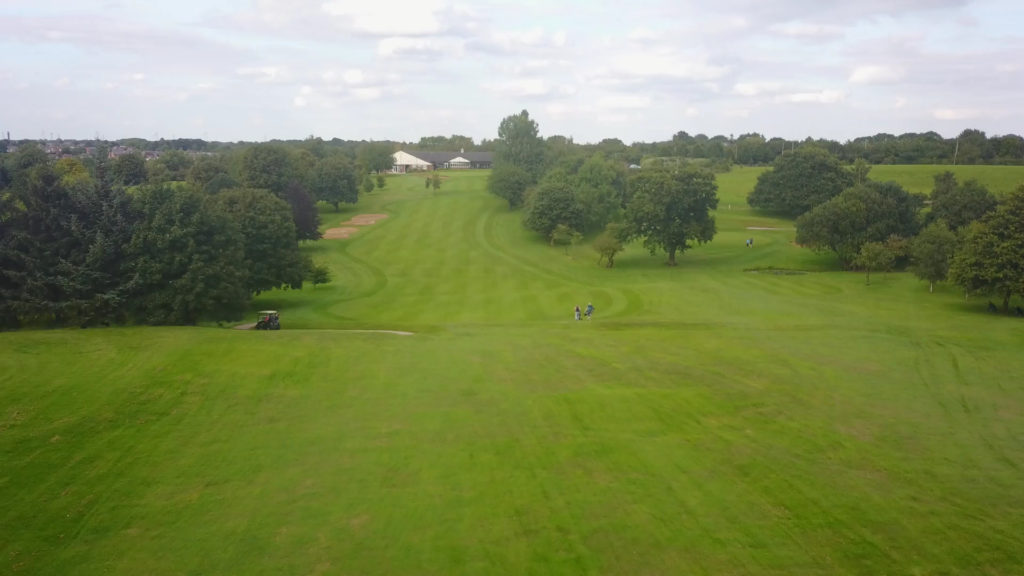
- If you do play, what’s your favorite aspect of the game?
The 19th hole!
- As a prominent seller on eBay, what have you learned about the marketplace for clubs? I imagine you’re selling to collectors/players worldwide.
The selling price of play clubs are on the increase and the selling price of smooth faced clubs and scare neck clubs are on the decrease. Seems there are a lot more hickory players than collectors about these days.
Play clubs achieve the best price if they are put into sets and fitted with matching suede grips of the era.
I sell worldwide, mainly to Sweden.
- Do you have any prized stories from your resales history, such as a bargain find that you were able to convert into top dollar, so to speak?
Two “bargain finds” that come to mind cost me nothing. Both finds were the result of purchasing bags of hickories from auction and having the foresight to turn the bag upside down once the purchased clubs had been removed. I wonder how many people have purchased a bag of hickories from auction, removed the clubs and discarded the bag without investigating what treasures lie within!
On one occasion I turned a bag upside down and a Willie Park transitional splice head fell out which I sold for £600 to a restorer friend and on another occasion four very old gutta percha balls fell to the floor which I sold for £400 to a collector.
Other bargain finds hidden in the bottom of old bags that I did not convert into top dollar and are now in my collection include the head of a water iron and the head from an early Forgan track iron.
- As a UK seller, do you have any general impressions of buyers from the USA? How would you characterize us over here (knowing that your observations may be generalizations)?
Great bunch of guys, you lot.
- Assuming you collect yourself, do you have 1 or 2 prized items that are your absolute favorites?
1) A circa 1930 Dunlop advertising ball that was designed to be worn on your head. Some poor bloke would have had to put it on and proudly walk around Championships. The ball is 1 foot in diameter.
2) A Gillespie Patent Pendulum putter. Only 25” long and designed to be used like a croquet mallet between one’s legs.
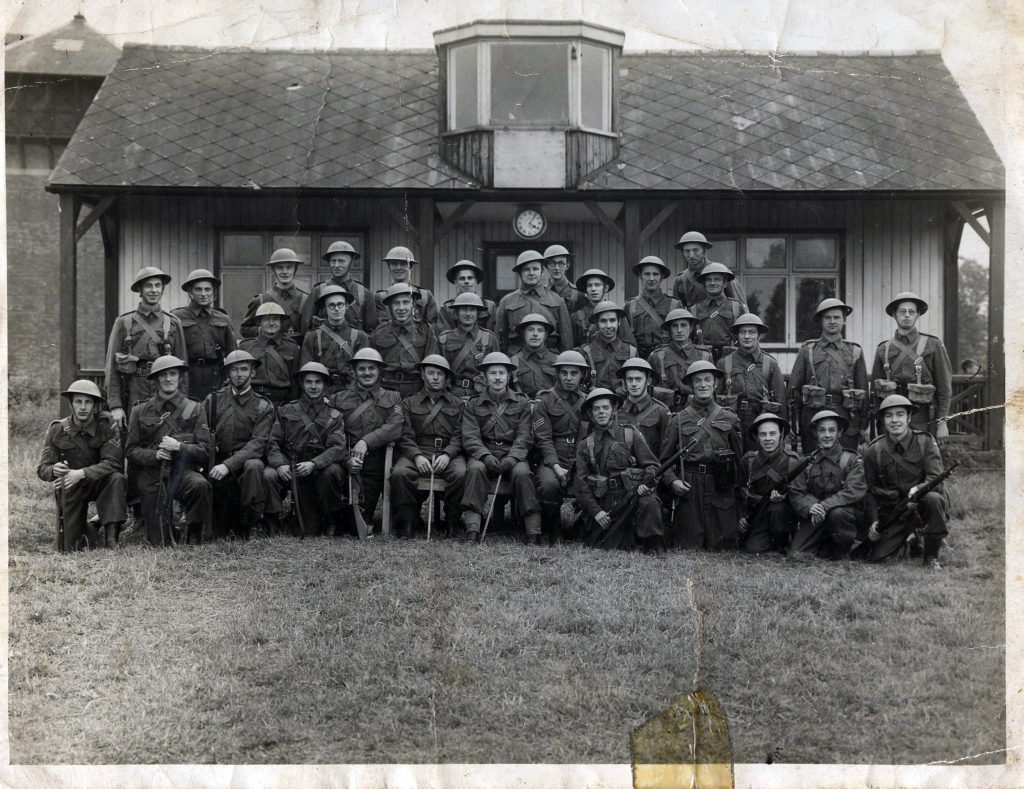
- Have you dealt with any significantly rare clubs, and if so, what were they?
No, not really.
- How long have you been selling hickory golf clubs?
Since 2010 when it was decided by my wife and I that I needed to reduce the size of my collection. Come to think of it, I don’t seem to recall voting on the subject!
- Do you use any outlets other than eBay?
I have sent clubs to auction with John Mullock, whom you mentioned in your email. Mullocks’ charge around 30% commission which is a bit hefty and so nowadays I tend to sell on eBay who charge 10% commission.
Another sales outlet is by request. I have become well-known in the world of hickories and I am often approached, via email, by fellow hickory collectors/players for a specific makers club to add to their collection or to finish making up a play set and, if I have the club they seek, then a deal is struck.
- As a shipper, do you find much of a problem with breakage in transit when shipping wood shafted clubs?
The secret of successful International shipping is not to rely on the box to protect the club. I think of the box as the cardboard outer that you attach the shipping label to. The contents must be able to sustain dropping and crushing without relying solely on the box. When I ship a club, I first wrap the club in bubble wrap, then wrap thick cardboard around the entire length of the shaft, and then wrap more bubble wrap around the package. No breakages, thus far, using this method.
- Do you do all of your own photography? And how much time per week would you estimate you spend preparing your items for sale/listing?
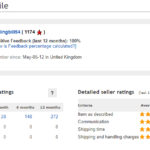
The pictures that accompany my eBay listings are taken using my iPad and loaded directly onto the eBay server.
Being retired, I spend most of my time cleaning hickories and replacing worn components such as grips and whipping.
It usually takes around 4 hours to put together a dozen, or so, listings on eBay.
- Are there any golfers in history that you most admire?
All the legendary golfers from the hickory era including Tom Morris, Jack White, Willie Park, Bobby Jones and all the greats who were able to reach a par 5 in two shots using a driver and a spoon.
- Is there a favorite course in your region that American visitors should consider playing when on holiday?
Golfing visitors to our shores always seem to make a bee-line for Scotland and the coastal links courses. This is a pity as here, in the rural heartland of England, there are a multitude of golf courses waiting to be discovered by overseas visitors. My home course at Lutterworth (established 1904) is well worth a visit along with the nearby course of Cosby (established 1895), Birstall (established 1901) and Kirby Muxloe (established 1893), to mention just a few. If a championship course is the order of the day, then The Belfry (home of the Ryder Cup on four occasions) is only 30 miles away.
- I presume you work on your clubs yourself. Is that the case, and if so, are you part of a large consortium of gentlemen/ladies who meet and swap clubs in the UK?
Yes, I restore clubs to the best of my ability which usually involves cleaning and polishing. To the best of my knowledge, no such “swap club” consortium exists in the UK.
- Are you a member of the British Golf Collector’s Society or other collector’s organization?
No.
- Do you have a favorite book on golf?
My favorite books on golf are all reference books, the best of which is “Cleek Marks and Trademarks on Antique Golf Clubs” by Peter Georgiady & Patrick Kennedy. An essential book for any collector to enable accurate identification of a club maker by his cleek mark.
- If you had to name one item you’d most like to own (golf related), what would that be?
Any club made by Hugh Philp.
- Any advice for new collectors/sellers on eBay? Are there any tricks of the trade to help a novice get into this?
When buying on eBay, make sure that the listing contains all the information you would expect to see. If the club length is not stated, for example, then ask the seller to measure the length of the club to ensure it has not been cut down at some time. If the club has not been photographed from every angle then ask the seller for additional photographs as they may be trying to hide a defect. If you are not happy with your purchase, eBay has a good Buyer Protection Policy and will issue a full refund if the club is not as described or the club has a defect that wasn’t mentioned in the listing. The refund process is lengthy so it is a good idea to check the seller’s feedback before buying.
When selling on eBay, presentation of the club to be sold is important and superficial cleaning is a good idea if you are confident in doing so. It is important not to cause irretrievable damage to the club by trying to enhance the club’s appearance. The use of rust remover to remove rust from the head of an iron, for example, will render the club worthless as the rust remover will attack and tarnish the club head. The novice it is probably beat to sell the club “as found” and to state that in the listing.
When listing on eBay you need to enter a full description of the item and be honest. With clubs specify condition, length, straightness of shaft, etc. and any defects that you can see. It is pointless to advertise a Forgan driver as being in “good condition for age” when there is a crack down the back of the head as the buyer will use his eBay Buyer Protection rights to claim a refund and you will foot the bill for the original shipping and the bill for having the club shipped back to you.
If you are able to measure the loft and swing weight then do so.
Photo the club from every angle. Clarity of the picture is essential and you need to think about the background. I tend to photograph the club with a hedge or bush in the background to enhance the club’s appearance. Take a photo of the makers head stamping against a white background to show the clarity of the stamping. Include a full-length picture of the club in an upright position so that any potential buyer can see the straightness of the shaft.
With the ever-increasing cost of shipping, it is a good idea to offer combined shipping for multiple purchases. I offer this service and have many hickory enthusiasts worldwide who benefit financially from this service. Some even buy 10 clubs, or so, from me over a period of several months and have them shipped together in the same box thus saving mega bucks on shipping.
